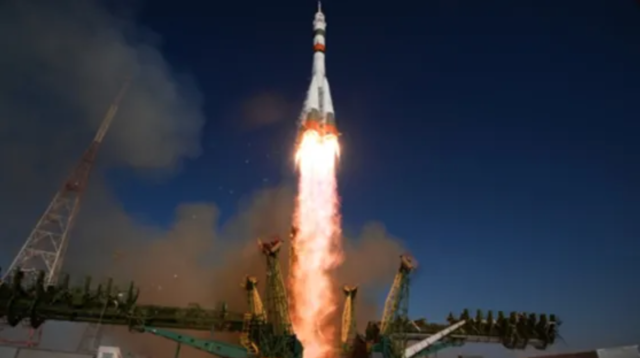
Russia’s Approach to Nuclear Power in Outer Space
Publication: Eurasia Daily Monitor Volume: 18 Issue: 92
By:

Russia has been conducting research and development (R&D) on using nuclear power in outer space for years. On May 22, Alexander Bloshenko, executive director for advanced programs and science of Roscosmos, announced that the first mission of the nuclear-powered spacecraft, also known as the transport and energy module (TEM), is scheduled for 2030 (TASS, May 22). A week before this announcement, there was a deliberate leak from the Keldysh Center, a Roscosmos subsidiary entity, that this nuclear-powered spacecraft might be used for military purposes along with civil ones (RIA Novosti, May 13). These verbal interventions almost coincided with the hearings in the US Congress on the NASA budget request that proposes $585 million for nuclear thermal propulsion technology in FY2022 and ongoing American efforts in this field (SpaceNews, May 19; Physics Today, May 28). That means the Russian program on space nuclear power systems has not only technological but also geopolitical goals.
The current Russian program has a Soviet background. The USSR launched 33 military reconnaissance and targeting spacecraft with nuclear reactors into low-Earth orbit from 1969 to 1988. Most of them used thermoelectric nuclear power plants “Buk,” and the last two spacecraft used more advanced thermal electron emission NPPs “Topaz” with 4.5–5.5 kW of electric power. The Soviet Union also developed the prototypes of nuclear rocket engines, but the project was closed in 1986. In the early 1990s, a Russian-American project aimed to develop the “Topaz” reactors further, but was canceled by 1995. In 2000–2007, Russia tried to cooperate with China in this field (Kukharkin, 2012).
Despite long-term economic decline, Moscow has also tried to continue its independent efforts in space nuclear power systems since 1998, and during the presidency of Dmitry Medvedev, these efforts were proclaimed among the Kremlin’s key priorities (Pravo.gov.ru, February 2, 1998; RG.ru, November 13, 2009).
The program’s budget of 17 billion rubles for the period 2010–2018 was divided between Roscosmos (9.8 billion rubles) and Rosatom (7.2 billion rubles), totaling $560 million according to the exchange rates of 2010 (RG.ru, October 3, 2012). However, the actual spending was smaller. In 2010, only 500 million rubles ($16.5 million) were assigned for the purpose (Roscosmos, February 10, 2010). During the following decade, the total spending has reached almost 10 billion rubles or $213 million according to open data on federal budget funds and procurements released by Roscosmos and Rosatom (Vesti.ru, January 19, 2011; Interfax, October 12, 2020; Zakupki.gov.ru, 2013–2021). The current results of these efforts are less than initially planned.
For instance, the original technical requirements approved a space nuclear power system that gives 1 MW of electric power and an ion thruster with 50 kW of power (Zakupki.gov.ru, June 26, 2016). However, the evidence shows that Russia works on space nuclear power systems YaEU-25M, YaEU-25 and YaEU-50 with 10–40 kW of electric power (Kurchatov Institute, November 3, 2016) and on an ion thruster with 25 kW of power (OKB Fakel, 2021). Currently, there are only estimations in modeling specifications for the development of space nuclear power systems with a higher power (Energia.ru, January–March 2017; Energia.ru, April–June 2020).
In comparison with NASA that tries to design a 10 kW space nuclear reactor with a Stirling engine intended to increase efficiency, the thermal electron emission remains the central paradigm of Russia’s R&Ds and the idea of using engines or turbines together with space nuclear reactors still remains theoretical (NASA, May 2, 2018; Issledovaniya Naukograda, July–September 2017). It is doubtful that Russia will develop the space nuclear power system with 1 MW of electric power and ion thrusters with more power in the foreseeable future. Still, Moscow definitely will try to convert existing results into some advance in outer space and foreign policy.
Along with a significant deficiency in other dimensions of Russia’s space activity and the country’s overall economic weakness, these problems prompt the Kremlin to look for an ace up its sleeve. While there is still a long way to go to develop nuclear reactors for space exploration missions, Russian industry and authorities are seeking to apply nuclear power for military satellites (KB Arsenal, September 1, 2020). Such spacecraft may be used for radar reconnaissance and electronic warfare (jamming) and be deployed to low, medium or geosynchronous orbits. However, there have not been any flight tests or technological demonstrations of such a satellite yet. This means Moscow will not be ready to deploy these satellites any time soon. Moreover, the promotion of nuclear-powered spacecraft for military purposes may be used by Russian space and nuclear industries as a tool for obtaining more money from the government to boost this slow and risky program.
For its part, the Kremlin tries to maintain uncertainty regarding its real intentions. It classified the “Strategy for developing space nuclear power until 2030” that appeared in 2019 and became the first policy paper in this field since 1998 (Interfax-AVN, August 13, 2019). Even if the first Russia-made military nuclear satellite appears by 2030, it will not be a game-changer in technical and military terms. Still, Moscow will try to sell it as a political game-changer (Interfax-AVN, December 12, 2020). First, Russia regularly promotes preventing the placement of weapons in outer space (Kommersant, April 12, 2021). Second, Russia is incapable of remaining as one of the leading space powers without cooperating with other space powers. Russia’s leadership considers space nuclear technologies as a way to develop such cooperation, even in the face of an ongoing confrontation with the West.



